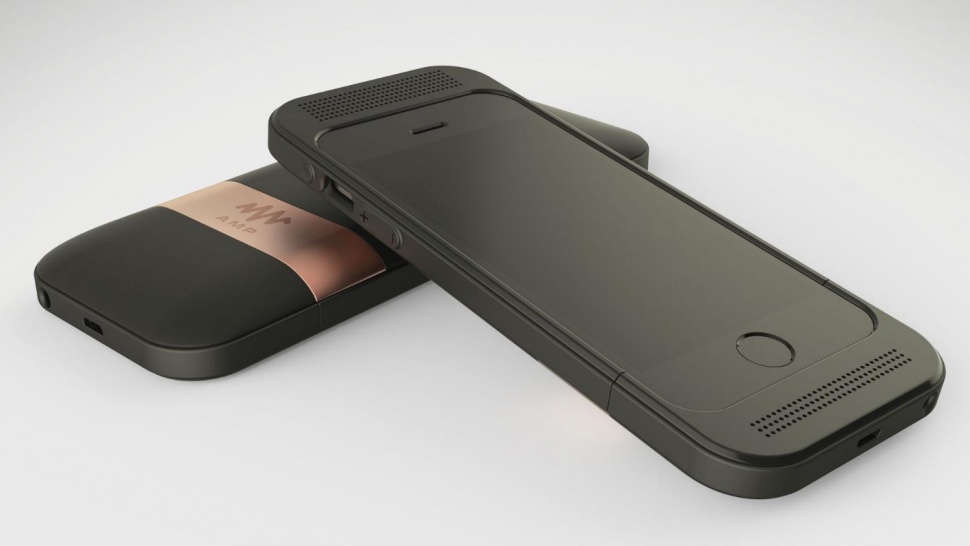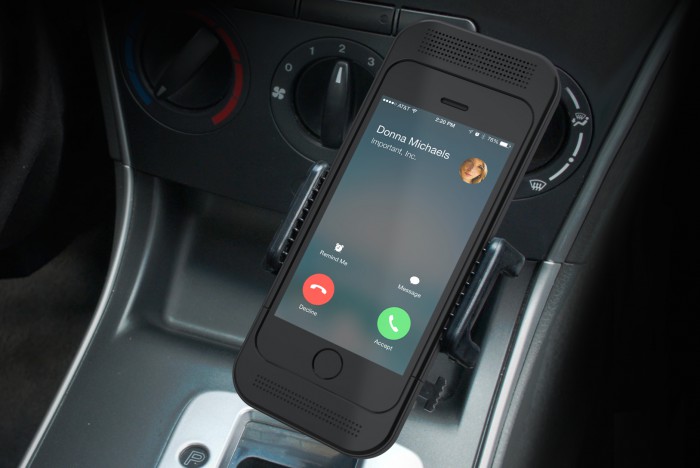
In May 2016, startup company SoundFocus announced that, due to filing bankruptcy, it would retire its sound amplifying product AMP and wind down the entire business. In a blog post, co-founder Alex Selig wrote, “At the beginning of this year, a critical investment fell through. This forced the company to seek immediate alternatives. When additional investment was not forthcoming, we had to turn to finding an acquirer to help us fulfill our pre-orders…After several months of negotiation and receiving a letter of intent from the potential acquirer, the deal fell through at the final stages.”
Selig and his co-founder Varun Srinivasan developed AMP to make hearing disability less of an issue for music listeners. Presented as a specialty iPhone case that is part speaker and part microphone, the Amp has a pair of high-quality speakers and a “brain” that tailors sound quality for the user, a feature marketed for use in conference calls. The device also has a software component that tests each user’s hearing at different frequencies to make a personalized sound profile, adjusting a song to compensate for ambient noise.
Seemingly thorough in providing ideal sound, AMP’s failure could be attributed to more than financial issues. As evident by consumers’ experiences, a product not living up to expectations or a company failing to communicate with customers can be a driving force towards shutting down. All three issues appear to have played a part in SoundFocus’s bankruptcy.
Product feedback may have led to investments falling through, with public forum comments hinting at poor AMP customer service. On Apple discussion community iMore, a user shared AMP email responses to his inquiries about a repeatedly delayed preorder delivery. “The initial factory setup and the necessary product refinement to pass industry certifications took longer than originally planned,” the email read. “As a result, we will now be shipping AMP for iPhone 6/6s Plus in Summer of 2016…if the wait is too long, we will honor your refund request.”
With an original release date of spring 2015 and vague promises of refunds, AMP did not exactly introduce itself to the public in the best way. As discussed in comments on a VulcanPost review, an actual product had yet to be released to public investors when the company informed them of its bankruptcy. Reimbursing those who pre-ordered is often a low priority in bankruptcy procedures, so it is expected that these consumers will get nothing in return.

Those who briefly got their hands on AMP had mixed reviews. A Macworld piece noted that the AMP case made an iPhone feel oversized, adding about half an inch to each end of the phone. Leah Yamshon, Macworld’s Associate Managing Editor, noted in her review that the additional real estate made touchscreen use difficult and that she saw the product as more of a “use as needed” case. “We also tried a conference call, using the AMP as both our speaker and our microphone. I thought the call sounded better than a typical iPhone call on speakerphone, but not quite at the level as the Polycom Speakerphone system.”
The sound quality of songs and the app providing a sound test was not an issue for her, unlike a reviewer at The Verge, who wrote, “I found the sound to be less appealing than the sound coming out of an iPhone 5….the SoundFocus adaptive filters sounded muffled.” While the speaker earned better commentary, writer Josh Lowensohn remarked about it, “In any case, it did not sound close to what you’d get in a standalone portable Bluetooth speaker, which is ultimately what you’d want to compare this to.”
Professional reviews seemed to agree upon AMP’s speaker being a helpful improvement to just a solo iPhone, but not something that differentiates it from actual speaker systems. New solutions should improve existing tasks, not repeat the function of existing alternatives. While AMP was the company’s first personalized audio products, a press release states that the SoundFocus app – launched separately from AMP – “has been downloaded over 150,000 times, has a 5-star rating, and personalizes over 1.5 million songs per month.” Many iTunes reviews praise it for being the only sound equalizer app that truly made a difference in music quality. With an effective app under its belt, how could SoundFocus have missed these cues with AMP?
SoundFocus also had other popular crowdfunded campaigns to look towards for advice. The Oculus Rift Kickstarter campaign is well-known, voicing its consumer appreciation by providing all backers who pledged for a Rift development kit with a free Kickstarter Edition Oculus Rift. Other products, such as the 3D printing pen 3Doodler, were efficiently delivered to backers within an average of a year after fundraising ended. Another high-earning campaign, for the Pebble E-Paper Watch, had product delays similar to AMP and raised the question about companies’ ability to fulfill so many orders quickly. While AMP didn’t use Kickstarter and any record of its amount of investors is no longer available, there is the possibility that the company underestimated the resources it would need.
Ultimately, while financial difficulties were likely to be the greatest fault, simple factors such as the product’s bulky size may have affected customer perception. Consistently poor customer communications was also a likely contributing factor, proving to irritate investors to the point of canceling preorders and only worsening due to the company’s vague assurances that the product would eventually arrive. Compared to other campaigns’ reward systems for backers, AMP’s vocal gratitude towards investors fell flat. The entire procedure proves that, in the end, timeless practices of strong customer service can pay off well.
Source: iMore, VulcanPost, Macworld, BGR, Kickstarter 1, Kickstarter 2, Kickstarter 3, AMP Audio, Forbes, The Verge
Advertisement
Learn more about Electronic Products Magazine





